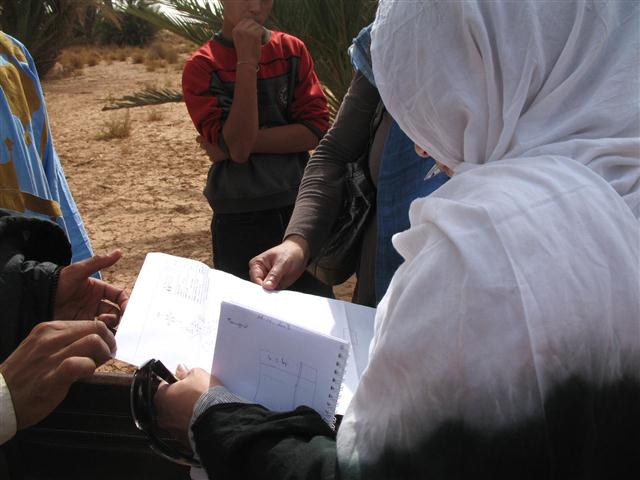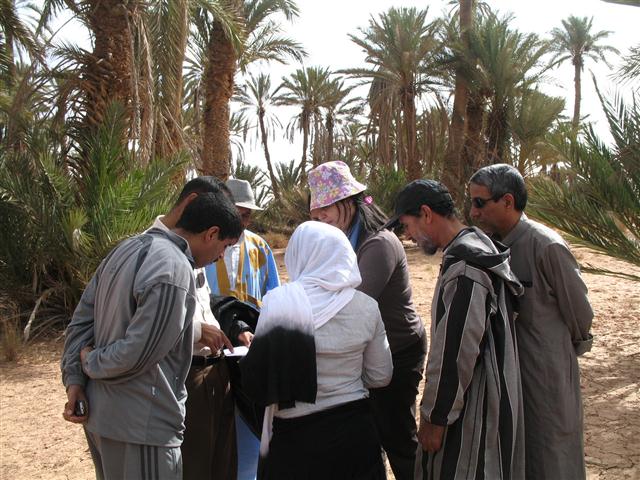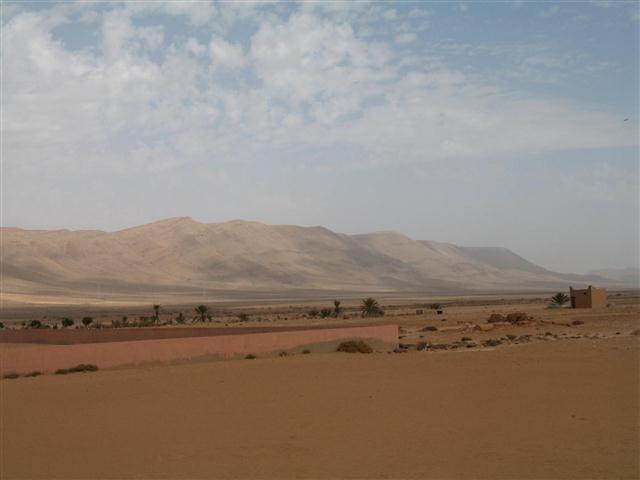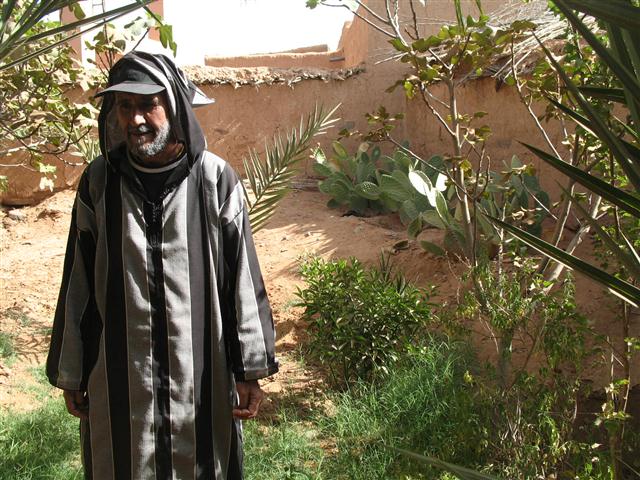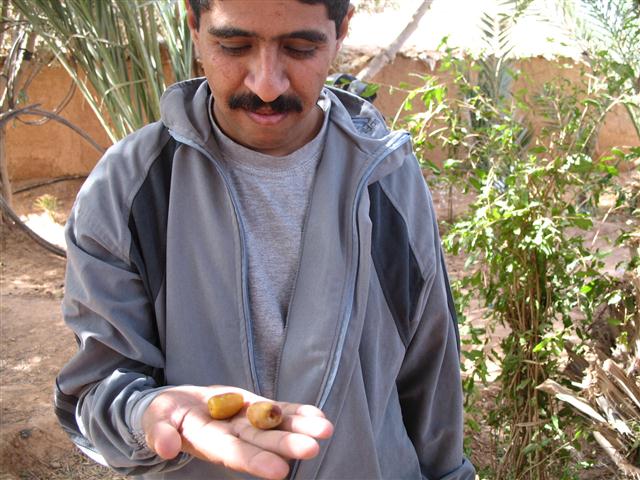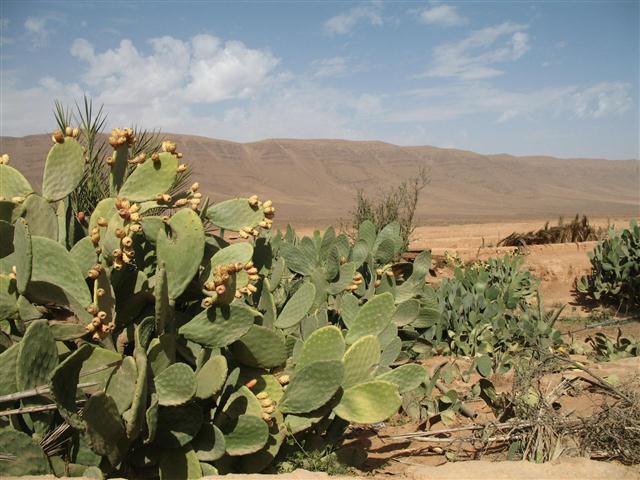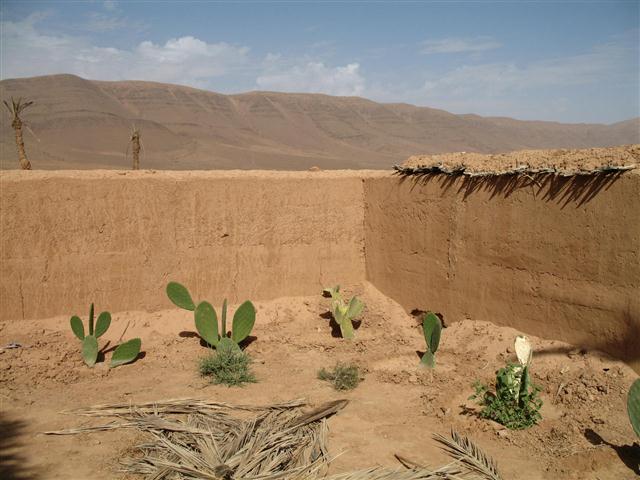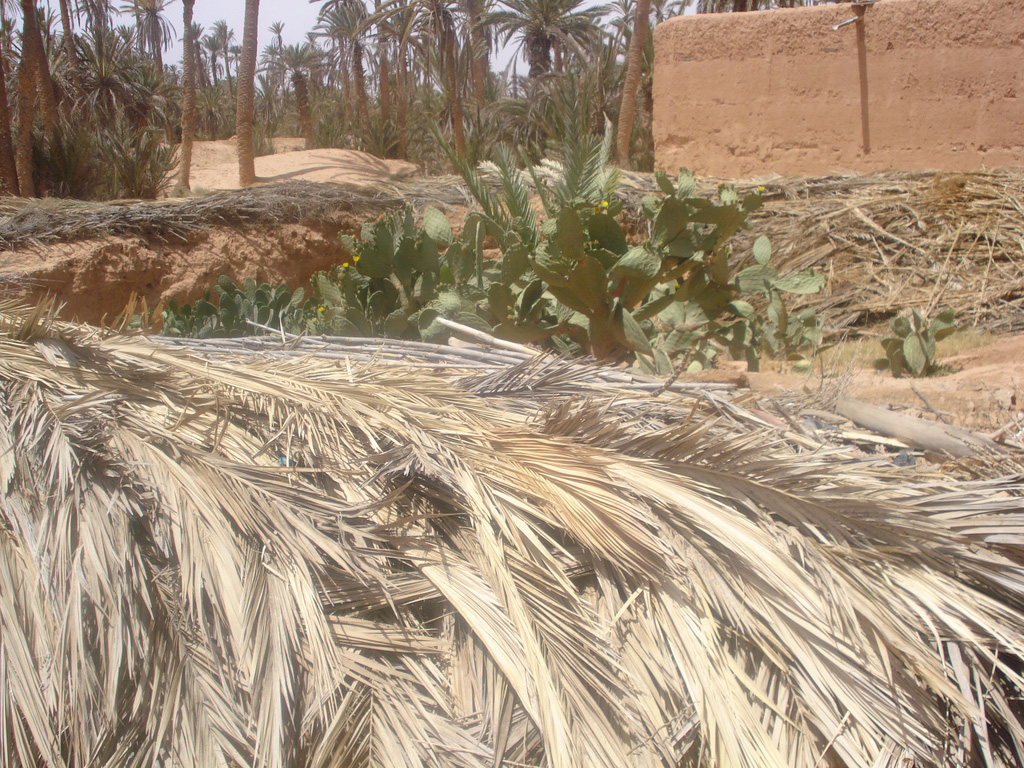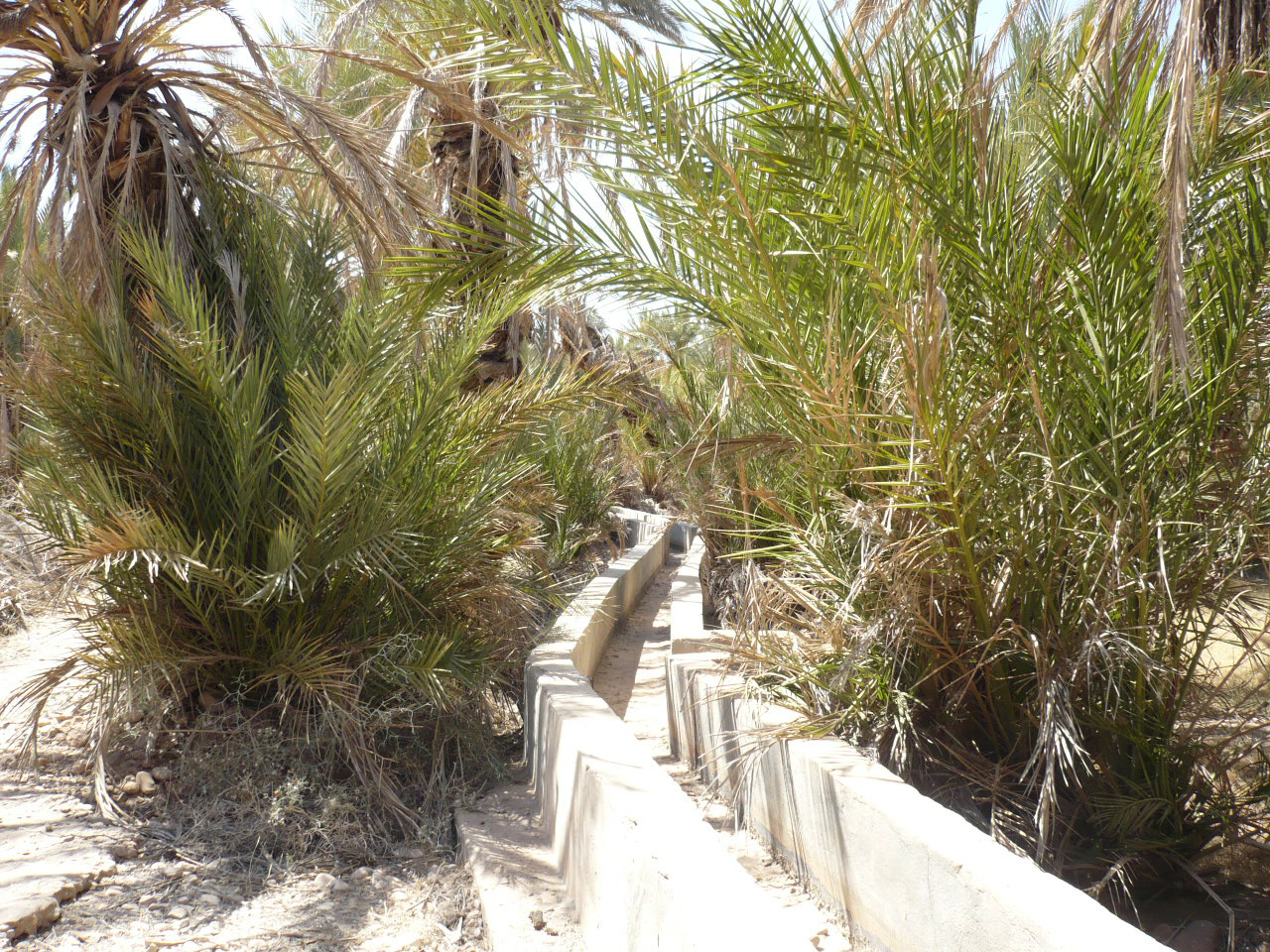CBA Morocco: Strengthening Tarmguiste Ecosystem Resilience and Local Adaptive Capacities (Espace Rural)
Project Overview
This project works with a rural oasis community in southern Morocco. The village is faced with high levels of environmental degradation, which contributes to significant outmigration. These pressures will be significantly exacerbated by climate change impacts. Climate change is projected to increase temperatures and reduce rainfall throughout Morocco, causing a decline in rainfall to communities throughout southern Morocco. This will reduce fuelwood resources and encourage the cutting of date palm – a foundation of the Oasis ecosystem.
This Community-Based Adaptation project builds upon baseline water mobilization and environmental management activities by planting more appropriate climate-resilient palm varieties, introducing more efficient ovens, developing palm barriers to reduce desertification, and demonstrating improved irrigation technologies. It also includes an awareness campaign and policy-oriented capacity building activities.
* This project is part of Morocco's Community-Based Adaptation portfolio. *
Project Details
The Tarmguiste Oasis is located in southern Morocco, near the Atlantic Ocean and on the edge of the Sahara Desert. This community of approximately 100 people mostly relies on subsistence farming (fruits, vegetables, fodder) and extensive livestock (sheep, goats). Oasis farming and livestock breeding heavily depend on the management of scarce natural resources.
Since fodder production is limited by water scarcity, livestock production has put significant pressure on the surrounding mountainous ecosystem. Additionally, since the agricultural system relies on irrigation, livelihoods are extremely vulnerable to increasingly unfavourable climate changes that have led to dramatic decreases in local farming productivity. These, in turn, have led to diminishing incomes and impoverishment. The resulting rural exodus could generate more and more conflicts over rare resources.
This Community-Based Adaptation project contributes to Oasis regeneration by replanting 4 hectares of farming plots and equipping them with water-conserving drip-irrigation. The resilience of the surrounding ecosystem will be enhanced by small community-built dams, which will reduce land degradation and facilitate water infiltration, thus recharging the water table on which the oasis farming relies. Community capacities will be reinforced through a participatory training programme aimed at mobilizing all community groups.
Key Results and Outputs
Outcome 1: Improved community capacity to manage risks to water and agroforestry systems
Plant more appropriate climate-resilient palm varieties (Output 1.1) and introduce more efficient ovens to reduce demand for palm tree fuelwood (Output 1.2). Develop palm barriers around water sources to decrease desertification risk (Output 1.3). Demonstrate improved irrigation technology at a pilot site (Output 1.4) and develop a revolving fund system to improve farmer access to this technology.
Outcome 2: Strengthened community capacity to address climate change
Conduct community awareness-raising (Output 2.1) and training activities (Output 2.2) on long-term climate risks, climate-resilient agriculture, and oasis ecosystem management. Establish a community-wide enforceable contractual framework promoting efficient and cooperative use of shared soil and water resources (Output 2.3).
Outcome 3: Local and national policies related to adaptation informed by project
Document lessons learned and practices piloted (Output 3.2) and incorporate them into local development plans (Output 3.3). Disseminate lessons learned through global knowledge networks (Output 3.4).
Reports and Publications
Project Brief / Fact Sheet
PIFs
CBA Morocco - Espace Rural - Concept (FR with EN introduction)
Monitoring and Evaluation
Monitoring and evaluation for community-based adaptation is a new field, and the CBA project is piloting innovative approaches to evaluating the success of locally-driven adaptation projects, and generating lessons to inform ongoing practice.
Key considerations in M&E for CBA include:
- Grounding M&E in the local context: M&E for CBA should avoid overly rigid frameworks, recognizing community heterogeneity and maintaining local relevance
- Capturing global lessons from local projects: CBA projects are highly contextualized, but lessons generated should be relevant to stakeholders globally
- Incorporation of both quantitative and qualitative indicators: to ground projects in tangible changes that can be objectively evaluated, and to capture lessons and case studies for global dissemination
To these ends, the CBA project uses three indicator systems: the Vulnerability Reduction Assessment, the Small Grants Programme Impact Assessment System, and the UNDP Climate Change Adaptation Indicator Framework.
The Vulnerability Reduction Assessment (VRA)
The VRA is a question-based approach with the following aims:
- To make M&E responsive to community priorities
- To use M&E to make projects more accountable to local priorities
- To make M&E capture community ideas and local knowledge
- To gather community-level feedback to guide ongoing project management
- To generate qualitative information
- To capture lessons on specific issues within community-based adaptation
- To generate case studies highlighting adaptation projects
The VRA follows UNDP's Adaptation Policy Framework, and is measured in a series of meetings with local community stakeholders. In these meetings, locally-tailored questions based on standard VRA questions/indicators are posed, and the community assigns a numerical score on a 1-10 scale for each question. Progress is evaluated through changes in scores over the course of implementation, as well as through qualitative data collected in community discussions surrounding the exercise.
UNDP has developed a Users Guide to the VRA (Espanol) (Francais) as a tool to assist practitioners to conceptualize and execute VRA measurements in the context of CBA projects.
The SGP Impact Assessment System (IAS)
The CBA, being a project of the GEF Strategic Priority on Adaptation, aims to increase the resilience of ecosystems and communities to the impacts of climate change, generating global environmental benefits, and increasing their resilience in the face of climate change impacts. To this end, the CBA projects use the SGP's impact assessment system for monitoring achievements in GEF focal areas (focusing primarily on biodiversity and sustainable land management).
The IAS is composed of a number of quantitative indicators which track biophysical ecosystem indicators, as well as policy impact, capacity development and awareness-building.
UNDP Climate Change Adaptation Indicator Framework
CBA projects also track quantitative indicators from UNDP's adaptation indicator framework, corresponding to the thematic area on natural resources management. More information on UNDP's indicator framework can be found on the UNDP climate change adaptation monitoring and evaluation website.
* This description applies to all projects implemented through UNDP's Community-Based Adaptation programme. Specific details on this project's M&E will be included here as they become available. *
